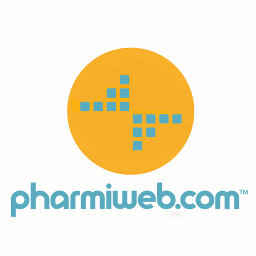blog:
The role of advertising in a wider marketing strategy

When discussing advertising with clients, we are usually met with two distinct camps – those who will happily throw every penny they have to get full-page ads in their favorite magazine, and those who would rather shout about their company at people in the street than pay for any form of advertising.
Of all the marketing channels, buying advertising is one of the most controversial. And this is for good reason. Advertising is one of the best ways to spend a few hundred thousand dollars and end up scratching your head at what you just paid for. If a proper strategy isn’t implemented that is.
Why consider advertising?
Like other paid channels, advertising is one of the fastest ways to promote your brand and services. Without too much effort, you can have digital banners and print advertising all over the websites and publications that your audience are reading within a few weeks. And if you are under any pressure to show proof of your marketing, the results are simple to show.
When speaking to clients they will often reference that a certain competitor ‘is everywhere’, referring to being on the front and back page of every magazine that they pick up. If you want people to know who you are and what you can offer, advertising is a very powerful tool.
Advertising is also a great idea if your owned channels are still being developed. Growing an email list takes time and effort, but most publications have a database of users that are GDPR-compliant and ready to go. Advertisers provide audience data on the people that read their publications and open their emails, which you can use to create a very targeted advertising campaign without having to build up a list of your own.
When advertising goes wrong
Whilst advertising has some clear advantages, it is also one of the riskiest strategies if you don’t know what you are doing. Advertising is expensive when compared to other marketing channels, and without a clear strategy and experience, you can spend thousands of dollars with minimal returns. A common tactic is to purchase print advertising, which can be clipped and clearly demonstrated to your internal team. Unfortunately, while print advertising can be powerful, it is almost impossible to measure.
Digital advertising may seem like the best method as you can get the data from the website you buy the banners from and report on those results. With a generic message and no additional tracking into your analytics platform and CRM these results can seem empty though. We achieved a few hundred clicks, so what? Where are the leads? What is the ROI?
Advertising as a part of a wider marketing strategy
Advertising is a fantastic tool, but can be limited when used in isolation. When implemented as a part of an integrated marketing strategy, it becomes far more effective. Here are some key considerations when adding advertising into your strategy:
Setting goals
When creating any marketing strategy, having clear goals and objectives from the start is a must. If you are trying to raise awareness in a new country, your strategy will be completely different from a targeted lead-generation campaign. With your goals decided, key performance indicators (KPIs) should always be attached to advertising campaigns to measure performance and understand what is working (and what isn’t).
Messaging and content
With the goals set, you now need to communicate your offering to your audience. Without clear messaging that clearly shows your USPs, you are wasting your marketing spend. Buying advertising or investing in any marketing channel without messaging or content is likely to result in poor engagement.
In our experience, creating content that speaks to your audience’s pain points is one of the most powerful tactics available. Promoting this content is far more effective than promoting a generic message. If no one has heard of you, why would they click a banner that adds no value? Providing value and showing customers that you have the technical capabilities, capacity and customer service to back it up is a far more effective strategy.
Measuring and monitoring your paid channels
You should always be testing and optimizing your paid-for campaigns. Taking a KPI that can be measured across your paid digital channels such as cost-per-click (CPC) and cost-per-conversion (CPC) allows us to compare which channel and what ads are most effective for your audience. When analyzing the results we often find that one channel is outperforming the others, or that a particular website is performing the best. When doing this analysis for one client we found that 90% of leads were coming from GoogleAds, with only 10% from media advertising – even though the spend for advertising was significantly higher. It pays to test and optimize.
Bringing in your other channels
Remember, advertising is a great tool to get quick results, but is one of the most expensive options to get your message into the market. With your advertising campaign set up and running, the strategy should be to build owned channels with the help of your advertising so that you are not relying on only paying for exposure.
Gating the content that you are promoting so a user must enter their email address means that you can build up your own email list and start to create a marketing automation strategy. Ensure that content placed on advertiser’s websites has a link back to your website to improve SEO and organic rankings. Building your owned channels through an advertising campaign will exponentially grow your presence in the market long term.
Related news, insight and opinion




